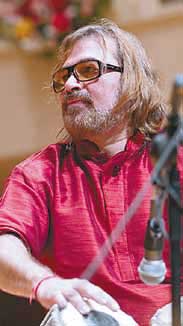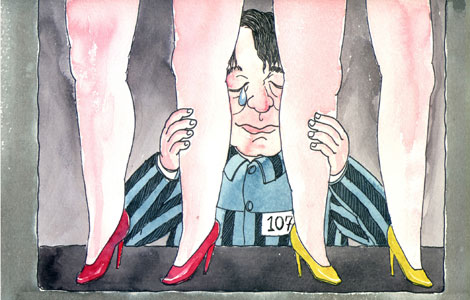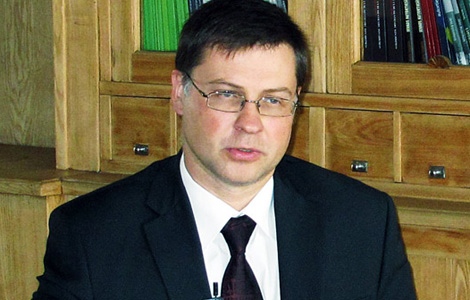A tribute to Chinese and Indian dulcimers
Updated: 2013-07-18 23:21
By Mu Qian (China Daily)
|
|||||||||||
For the first time, the Chinese dulcimer yangqin and the Indian dulcimer santoor were played together with a symphony orchestra at a recent concert in Beijing titled East Meets East.
"I hope we can keep our own music idioms but at the same time find some common ground," says yangqin player Liu Yuening, who initiated the project she calls "Sino-Indian new music".
 | |
 |
 |
|
Chinese yangqin player Liu Yuening (top) collaborates with Indian santoor player Tarun Bhattacharya (below left) and tabla player Vijay Ghate at the East Meets East concert in Beijing. Photos provided to China Daily | |
The work Four Scenes in Dream, composed by young Chinese composer Yu Yang, presented an inclusive form and created parts for the Chinese and Indian instruments to have not only solo parts but also occasions to play together.
Conducted by Hu Yongyan, the EOS Symphony Orchestra performed along with Liu, who played both yangqin and guqin, Indian santoor player Tarun Bhattacharya, tabla player Vijay Ghate and Chinese Tambura player Du Yu.
"What we try to do is to put Chinese melodies in the Indian music framework and merge them with symphonic language," Liu says. "In the work, there is also space for each solo instrumentalist to improvise."
The title of the concert "East Meets East" is a term that Liu created with reference to "West Meets East", a record that violinist Yehudi Menuhin and sitar player Ravi Shankar made in 1966.
"When Shankar visited China, he was very interested in traditional Chinese music and wanted to collaborate with Chinese musicians," Liu says. "It is a pity that he didn't realize this idea during his lifetime. I'm trying to make it happen."
The concert with the EOS Symphony Orchestra is actually already the third of the East Meets East concerts.
In December 2009, Liu had the first music dialogue with Indian music, performing with the famous santoor master Pandit Tarun Bhattachar in Kolkata.
In May 2011, she joined hands with a group of Indian musicians to perform at a concert commemorating the 150th anniversary of the birth of Indian poet Rabindranath Tagore.
Yangqin is a Chinese hammered dulcimer that originated from Persia. Today, various hammered dulcimers are played not only in China, but also Eastern Europe, the Middle East, India, Iran and Pakistan.
Liu studied yangqin since childhood. She got her master's degree at the Central Conservatory of Music in Beijing in 1994 and her PhD at Eotvos Lorand University in Hungary in 2008. As a fellow of the Ford Foundation, she also studied at the Delhi University of India in 2009.
As a professor of Central Conservatory of Music, vice-president of the Yangqin Association of China and council member of the Cimbalom (Eastern European hammered dulcimer) World Association, Liu focuses not only on her performance of yangqin but also the promotion of the instrument in the world.
"Hammered dulcimer is a world instrument, and yangqin has its unique sound in the big family," Liu says. "I hope through musical dialogues with hammered dulcimers from other parts of the world, yangqin will become more popular internationally."
Liu says the "East Meets East" project of Chinese and Indian musicians will continue, while she is planning another project for Chinese yangqin musicians to collaborate with santoor players from Iran, where the hammered dulcimer originated.
Today's Top News
Bacteria may extend longevity, study finds
GSK finance head not allowed to leave
Putin puts US relations above Snowden
DPRK demands release of free seized ship
Bomber as rock star? Rolling Stone cover outrage
7.75% growth possible in 2013
China, Belarus commit to plans
More use smartphones to access the Internet
Hot Topics
Lunar probe , China growth forecasts, Emission rules get tougher, China seen through 'colored lens', International board,
Editor's Picks

|

|

|

|

|

|





